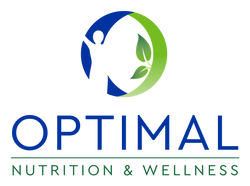“If you don’t know the how, where, what or why, prescribe ye then K+I.”
Dr. Guy Abraham, a now deceased OBGYN, endocrinologist, researcher and professor at UCLA, often credited his own medical professor with the statement above concerning iodine. Perhaps it was that very statement that piqued Dr. Abraham’s curiosity as to why Iodine, an incredibly necessary element for the human body, fell out of vogue with the medical profession over the past hundred years. Hence, “The Iodine Project” was born.
Through his focused research, breakthroughs in health have been realized from iodine usage. In this brief article we will touch on what it is, what is it used for, where do we get it, and some of the benefits of adding iodine into your daily routine.
What is Iodine?
Iodine is one of the five naturally occurring halogens (fluorine, chlorine, bromine, and astatine are the others) on the periodic table and is the ONLY one that is non-toxic. It is essential for life and necessary for growth, development, thyroid hormone production, metabolism and more. The human body requires far greater amounts than current RDA allowances. It can be found in the form of iodide or iodine, but for our purposes today we will not get into the details of the different forms. Lugol’s formulation contains both iodide and iodine, making it a complete formulation.
Why are over 90% of Americans deficient in iodine?
Every cell in our body needs iodine, and we know it plays a huge part in feeding every gland in both men and women. You have likely heard of iodine being closely associated with the thyroid. To protect your thyroid from forming a goiter, your thyroid needs a minimum of 150 mcg a day. Sadly and shamefully, that is the current RDA. A lot has changed causing us to need much more iodine, but the recommendation has not been updated in decades! The abundant use of toxic halogens, particularly chlorine, fluorine, and bromine are rampant. We swim in and bathe in and drink chlorinated water. Water, toothpastes, and many drugs contain fluoride. Bromine has been substituted into our food products and is often in our clothing, upholstery fabrics, our cars, electronics, circuitry, carpets, and plastics as fire retardants. No matter where we turn, we cannot escape these toxic halogens which compete for the same cells in the human body as iodine. Indeed, they even block iodine from the cells that require it! Factor in the fact that our soil is now very iodine deficient, and we truly are in an iodine crisis. The current recommended 150 mcg recommendation cannot possibly nourish the thyroid as well as other organs and glands that depend on iodine to thrive.
What role does Iodine play in the body?
Every cell in the body depends on iodine for its own health. In particular, the glands in both men and women are fed with iodine. Iodine greatly nourishes the ovaries, breasts, prostate, pancreas, and stomach. The body parts that benefit from iodide are the salivary glands, thyroid gland, skin, brain, and spinal fluid. Without sufficient iodine, breasts can become fibrocystic, ovaries can grow tumors or cysts, thyroids can develop nodules and goiters, prostates can enlarge, brains can starve resulting in lower IQs, and the list goes on. Cancers can develop further down this deficiency pathway. Consider the numbers of cancers in these glands alone that have greatly increased in the last 50 years or so.
Stephanie Buist identified the following list of cancers that are indeed tied to iodine deficiency: lung, breast, colorectal, prostate, stomach, gallbladder, liver, cervix uterus, bladder, pancreas, kidneys, testes, corpus uteri (endometrium), lip, oral cavity, thyroid, brain, nervous system, thyroid, brain, ovaries and skin melanoma.
Iodine also serves the human body in other ways. Here’s a short list of its benefits: It is antibacterial, anti-cancer, anti-inflammatory, anti-parasitic, antiviral, elevates pH, and it is a mucolytic agent. White blood cells cannot guard against infection without iodine, and apoptosis (programmed cell death) cannot occur without it either. Iodine also reduces radiation damage in the body, detoxes the pineal gland and removes heavy metals.
It is estimated that daily requirements of iodine for these organs alone are: thyroid (6 mg), breasts (5 mg), other tissues (2 mg), totaling a bare minimum of 13 mg daily versus the outdated 150 mcg recommended. It is said that Okinawans, living in one of the world’s “Blue Zones”, ingest 13.8mg/day in their seafood-rich diet. Many live to be 100+ years old!
What are the symptoms of iodine deficiency? How do I know if I am deficient?
Symptoms of iodine deficiency include but are not limited to fatigue, low energy, weight gain, slow metabolism, brain fog, inability to sweat, cold sensitivity, enlarged prostate, dry skin, hair loss, fibrocystic breasts, ovarian cysts, memory loss, thyroid imbalances, hormone dysregulation, low IQs in children, and ADHD. Dr. Matalone can order a 24-hour Iodine Loading Test which is the most accurate way to assess iodine deficiency.
What are sources for iodine?
Food sources for iodine include fish, shellfish and seaweed, milk, cheese, yogurt, eggs, some fruits and specific beans; however, our soil is so depleted in iodine that Americans truly receive very little from food sources. Iodized salt is NOT a good source as the salt has been processed into an unhealthy form and there is little iodine left by the time it hits the supermarket shelves. With the severe deficiencies in Americans today, the best source is Lugol’s formulation of iodine, either in liquid or pill form, or as nascent iodine.
Are there any other supplements or co-factors necessary? Yes!!
Vitamin C 2,000-5,000 mg daily helps support detox
Magnesium 200-400 mg daily minimizes oxidative stress on the cells
Selenium 200-400 mcg daily helps thyroid hormone production and glutathione production
Unrefined salt can bind with bromine that is released by higher levels of iodine and carries it out of the body.
Co-factors B2 and B3 aid in energy production and speed progress. ATP Boost, a product available in Dr. Matalone’s store, provides these co-factors.
Zinc is also recommended for support.
Are there different applications for iodine?
Iodine may be used orally, topically, or diluted with normal saline in a nebulizer depending on your specific needs.
What’s my next step to determine if I need iodine?
Schedule an appointment with Dr. Matalone to assess your risks for deficiency. He will lead you through the process of appropriate dosing and help you with any detoxing that occurs. A book available for sale in Dr. Matalone’s store is The Iodine Crisis by Lynne Farrow to help you gain further information. It is also available on Amazon.com and is available on audiobook with Spotify and Amazon.






